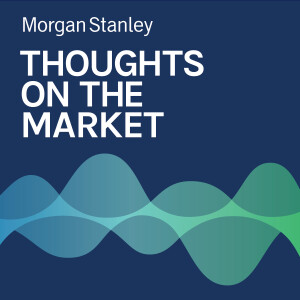
Andrew Sheets: A Murky Forecast for Equities and High-Yield Bonds
 2023-09-08
2023-09-08
Both equities and high-yield bonds could benefit from an end to ratings hikes, but may still face risks from company earnings revisions, a potential U.S. government shutdown and other events on the horizon.
----- Transcript -----
Welcome to Thoughts on the Market. I'm Andrew Sheets, Global Head of Corporate Credit Research at Morgan Stanley. Along with my colleagues bringing you a variety of perspectives, I'll be talking about trends across the global investment landscape and how we put those ideas together. It's Friday, September 8th at 2 p.m. in London.
The week after Labor Day is both a refreshing return to more normal market conditions, and a rush. As investors head back to school, so to speak, here are a few big issues that we think they should be focused on.
First and most importantly, we think the next few months will be about cementing the idea that both the Fed and the ECB are done raising interest rates for the foreseeable future. Given better than expected core inflation data in the U.S. and worse than expected growth data in Europe, we think neither central bank will raise rates at their meetings this month. And then further out, we think they stay on hold as lowered levels of bank loan growth, slower job growth and a continued decline in core inflation will reinforce the idea that central banks have raised rates enough.
For markets, the end of a central bank rate hiking cycle tends to be pretty good for high grade bonds. Indeed, going back over the last 40 years, the dates of the last Fed funds rate increase and the local high point for yields on the U.S. aggregate bond index, line up almost to the month. The logic in this relationship also feels intuitive. If the Fed is done raising rates, one of two things has probably happened. It stopped raising rates at the correct level to bring inflation down without a recession and bonds like that lower inflation and more certainty, or they stopped because they've raised rates too much, slowing growth in inflation much more, a scenario where investors like the safety of bonds.
But in riskier markets, the picture greeting investors in September is more murky. Like August, September also tends to see below average returns and above average volatility, and that seasonality doesn't turn helpful until mid-October. Company earnings revisions tend to be weak around this time of year, something our equity strategists believe could repeat. Investors got a lot more optimistic over the summer, raising the hurdle for good news. And there are some specific risk events on the near-term horizon, from a potential shutdown of the US government to a strike in the auto industry. For equities and high yield bonds, we therefore think investors should exercise more patience.
A third issue investors will be watching is supply. September is historically one of the heaviest months of the year for corporate bond issuance, but with corporate bond yields now at some of their highest levels in nearly 20 years, will that reduce the incentive for companies to borrow? And meanwhile, one of the reasons assigned to the recent rise in US government bond yields has been the high levels of government borrowing. The next few weeks will give a much better idea of the true impact of that potential supply.
Thanks for listening. Subscribe to Thoughts on the Market on Apple Podcasts, or wherever you listen, and leave us a review. We'd love to hear from you.
More Episodes
 2024-11-08
2024-11-08
 2024-11-07
2024-11-07
 2024-11-05
2024-11-05
 2024-11-01
2024-11-01
 2024-10-31
2024-10-31
 2024-10-30
2024-10-30
 2024-10-29
2024-10-29
 2024-10-28
2024-10-28
 2024-10-25
2024-10-25
 2024-10-23
2024-10-23
 2024-10-22
2024-10-22
 2024-10-15
2024-10-15
 2024-10-14
2024-10-14
Create your
podcast in
minutes
- Full-featured podcast site
- Unlimited storage and bandwidth
- Comprehensive podcast stats
- Distribute to Apple Podcasts, Spotify, and more
- Make money with your podcast
It is Free
- Privacy Policy
- Cookie Policy
- Terms of Use
- Consent Preferences
- Copyright © 2015-2024 Podbean.com




